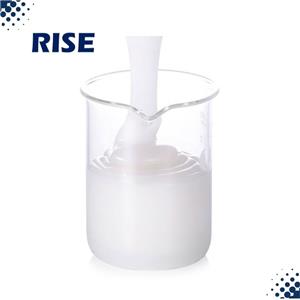How can paper defoamer improve paper quality and production efficiency?
Paper defoamer play a vital role in the pulp and paper industry. The main function of defoamer is to eliminate foam generated during the production process in order to improve paper quality and production efficiency. The appearance of foam not only affects the uniformity of pulp, but may also cause problems in the subsequent paper molding and drying process, leading to defects and waste of paper. Therefore, the use of a suitable paper defoamer is the key to ensuring a smooth papermaking process.

The principle of defoamer is mainly to destabilize the foam by reducing the surface tension of the liquid, prompting the foam to burst quickly. There are many types of defoamers on the market, which can be mainly divided into two categories: organic defoamer and inorganic defoamer. Organic defoamer include silicone defoamer, fatty acid ester defoamer, etc. These defoamers are commonly used in aqueous systems to effectively inhibit the formation of foam and accelerate the disappearance of bubbles. Inorganic defoamer is mainly used to deal with high temperature, high pressure process environment, with good heat resistance and chemical stability.
When selecting a paper defoamer, a number of factors need to be considered, including defoaming effect, compatibility, impact on paper properties, and cost. Different types of paper defoamer perform differently in different applications. For example, silicone paper defoamer usually have good defoaming effect, but in some cases may affect the gloss and strength of the paper, so they need to be evaluated in the actual application.

In addition, the amount of paper defoamer is also an important consideration. Excessive use of paper defoamer may lead to changes in the properties of the pulp and even affect the quality of the final product. Therefore, the amount of paper antifoam added should be reasonably controlled according to the production process and foam situation, in order to achieve the best defoaming effect. In the actual production process, the application of paper antifoam agent is a dynamic adjustment process. With the changes in production conditions, such as temperature, pressure, pulp composition, etc., the foam generation situation will also change. Therefore, it is necessary to regularly assess the effectiveness of the defoamer and make adjustments according to the actual situation to ensure the stability of the production process and the consistency of paper quality.




